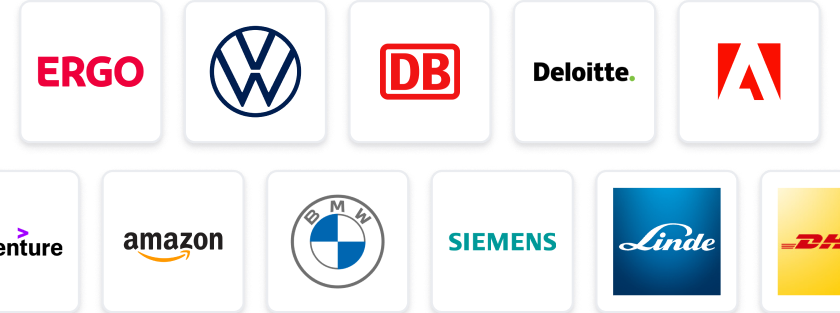At a Glance
- Tasks: Design and develop innovative energy-saving products with cutting-edge technology.
- Company: Pioneering manufacturer known for ethical practices and global exports.
- Benefits: Competitive salary, supportive team, and opportunities for professional growth.
- Why this job: Join a dynamic team and contribute to next-gen motor controllers that make a difference.
- Qualifications: Degree in Electronics or Engineering and experience in electronic product development.
- Other info: Collaborative environment with a focus on innovation and career advancement.
The predicted salary is between 36000 - 60000 £ per year.
An established manufacturer of energy-saving equipment with a strong record of innovation and global exports. Recognised as a pioneer in digital soft starter technology, the organisation has a long-standing reputation for ethical employment practices, high staff retention and ambitious growth plans.
The Role
A Design and Standards Engineer is sought to join an experienced engineering team, working on advanced technologies and contributing to the development of next-generation soft start motor controllers.
Key responsibilities:
- Designing and developing products with embedded PIC microcontrollers, with future projects transitioning to ARM cores.
- Supporting product certification processes and ensuring compliance with international standards, with an initial focus on IEC60947-4-2 and UL60947-4-2.
- Contributing across the product development lifecycle, including circuit design, power electronics, thermal analysis, and PC-based remote-control tools.
- Collaborating closely with international teams specialising in medium-voltage soft starter development.
About You
Were looking for a motivated engineer with a strong technical foundation and attention to detail. You should be confident working across embedded software development and compliance standards, with a passion for delivering innovative, reliable solutions.
Essential skills & experience:
- Degree in Electronics, Computer Science, Engineering, or equivalent.
- Proven track record in electronic product development and working with EU/US compliance standards.
- Ability to write efficient, maintainable embedded software.
- Experience interfacing with peripherals (SPI, I2C, UART, USB) and higher-level protocols (Modbus, TCP/IP).
- Familiarity with embedded development tools (debuggers, oscilloscopes, analysers) and source control/peer review processes.
Highly desirable:
- Experience designing and fault-finding electronic circuits.
- PCB design skills (ideally with Altium Designer).
- Knowledge of motor control principles and hardware/electrical interfacing.
If you are interested or have the relevant experience and are currently looking for a new challenge then please submit an up to date CV by clicking the apply button.
By applying for this position, you confirm that you consent to the processing of your personal data in accordance with the General Data Protection Regulation (GDPR) for the purposes of recruitment, employment and working finding service.
JBRP1_UKTJ
Design and Standard Engineer employer: TQR
Contact Detail:
TQR Recruiting Team
StudySmarter Expert Advice 🤫
We think this is how you could land Design and Standard Engineer
✨Tip Number 1
Network like a pro! Reach out to your connections in the engineering field, especially those who work with embedded systems or compliance standards. A friendly chat can lead to insider info about job openings that aren't even advertised yet.
✨Tip Number 2
Show off your skills! Create a portfolio showcasing your projects, especially those involving PIC microcontrollers or ARM cores. This will give potential employers a tangible sense of what you can bring to the table.
✨Tip Number 3
Prepare for interviews by brushing up on your knowledge of international compliance standards like IEC60947-4-2 and UL60947-4-2. Being able to discuss these confidently will set you apart from other candidates.
✨Tip Number 4
Don't forget to apply through our website! It’s the best way to ensure your application gets seen by the right people. Plus, it shows you're genuinely interested in joining our innovative team.
We think you need these skills to ace Design and Standard Engineer
Some tips for your application 🫡
Tailor Your CV: Make sure your CV reflects the skills and experiences that match the job description. Highlight your background in electronics and embedded software development, as well as any relevant projects you've worked on.
Craft a Compelling Cover Letter: Use your cover letter to tell us why you're passionate about this role and how your experience aligns with our needs. Don't just repeat your CV; give us insights into your personality and motivation!
Showcase Your Technical Skills: Be specific about your technical abilities, especially those related to PIC microcontrollers, compliance standards, and circuit design. Mention any tools or methodologies you’re familiar with that are relevant to the position.
Apply Through Our Website: We encourage you to apply directly through our website. It’s the best way for us to receive your application and ensures you don’t miss out on any important updates from our team!
How to prepare for a job interview at TQR
✨Know Your Tech Inside Out
Make sure you brush up on your knowledge of embedded systems, especially PIC microcontrollers and ARM cores. Be ready to discuss your experience with interfacing protocols like SPI, I2C, and Modbus, as well as any relevant projects you've worked on.
✨Understand Compliance Standards
Familiarise yourself with IEC60947-4-2 and UL60947-4-2 standards. Being able to articulate how you've ensured compliance in past projects will show that you’re not just technically savvy but also aware of the regulatory landscape.
✨Showcase Your Problem-Solving Skills
Prepare to discuss specific challenges you've faced in electronic product development and how you overcame them. Highlight your experience with circuit design and fault-finding, as this will demonstrate your hands-on expertise.
✨Collaborate and Communicate
Since the role involves working with international teams, be ready to share examples of how you've successfully collaborated in diverse environments. Good communication skills are key, so practice articulating your thoughts clearly and confidently.
